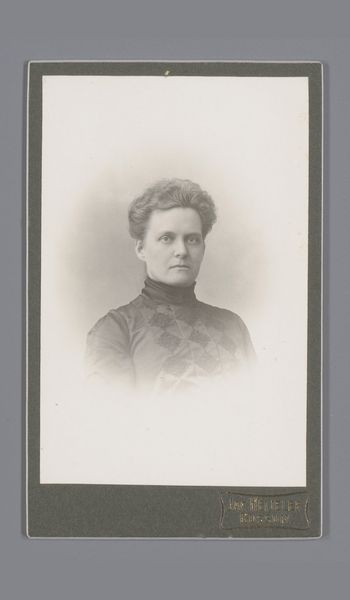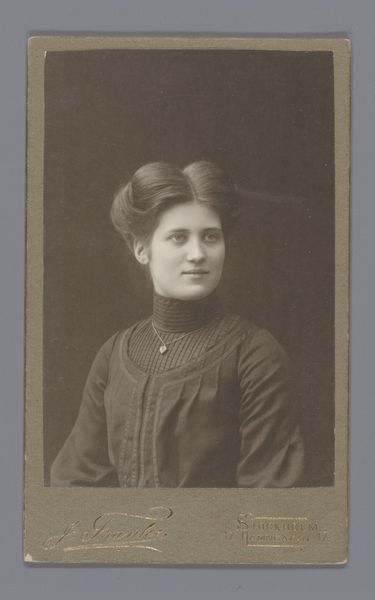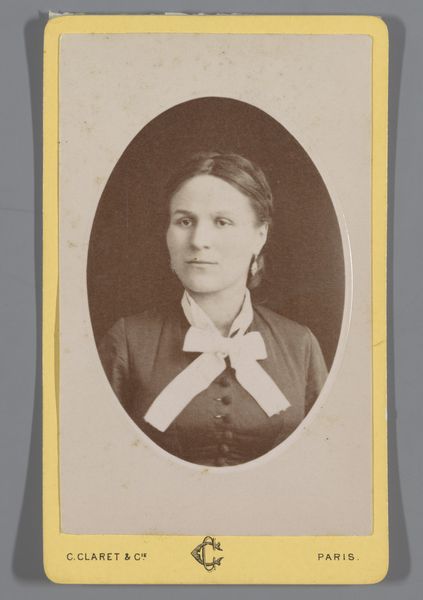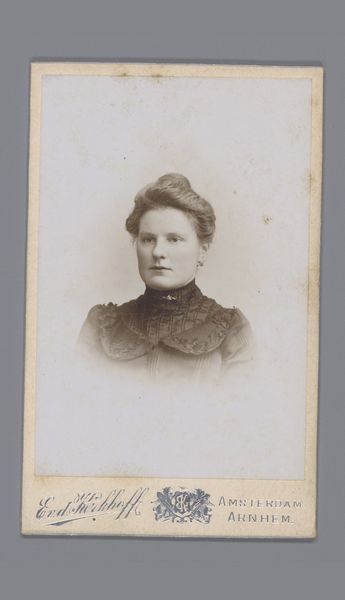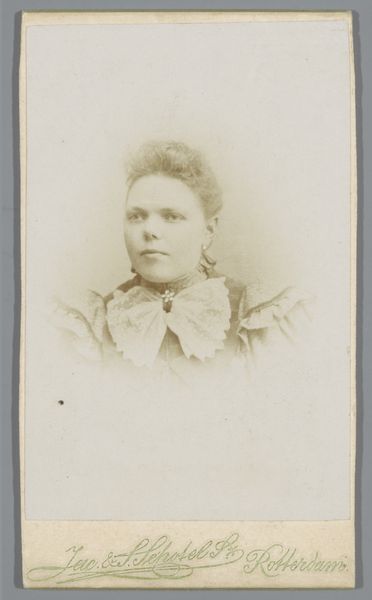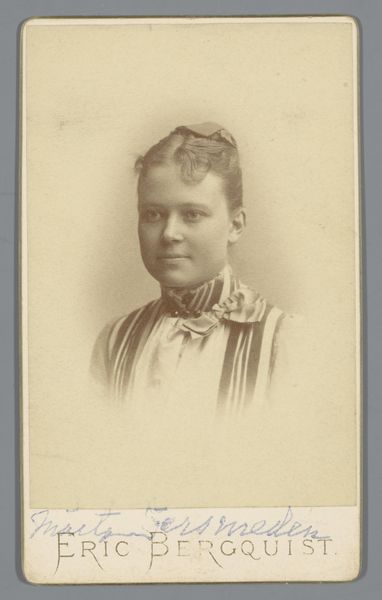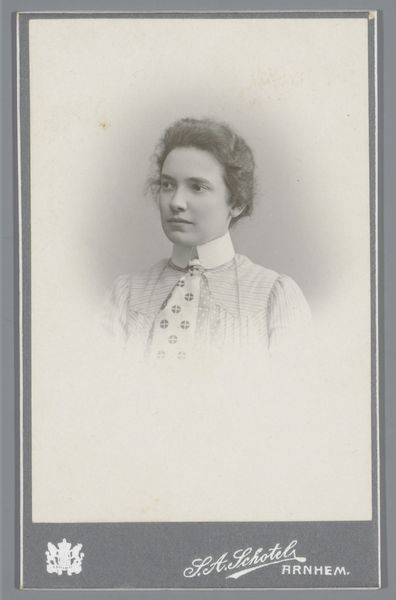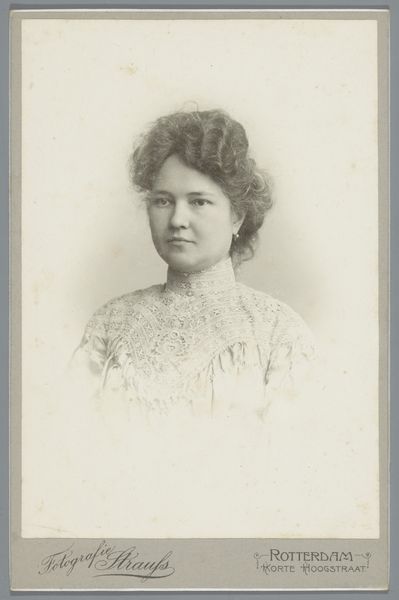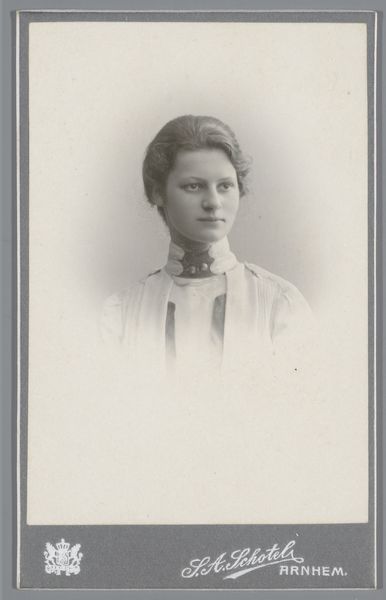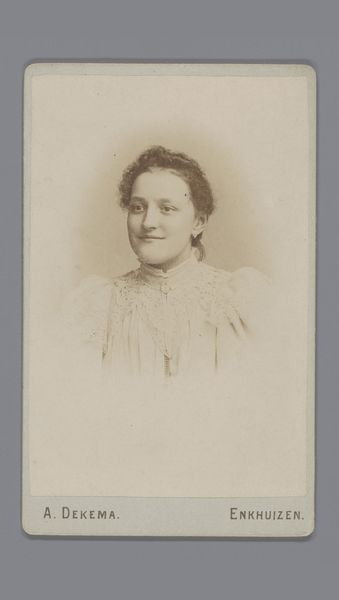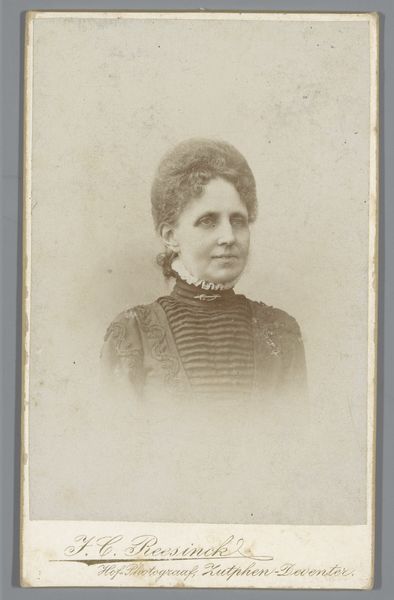
photography
#
portrait
#
photography
#
realism
Dimensions: height 104 mm, width 65 mm
Copyright: Rijks Museum: Open Domain
Editor: This is a portrait titled "Portret van een onbekende vrouw," made between 1882 and 1903 by Sytze Reinder Elzinga, and it's a photograph. I'm immediately drawn to the subject's gaze; she seems both present and distant. What compositional elements strike you most? Art Historian: Formally, the oval shape of the photograph isolates and emphasizes the sitter, directing our gaze to the tonality of her skin against the darker backdrop. The textural rendering achieved through photographic means is also remarkable. Notice how the contrasting values, ranging from the soft gradations on her face to the sharper definition of her attire, sculpt the form and create depth. The controlled tonality contributes to the serene, almost stoic, mood. How do you read the relationship between the subject’s clothing and expression? Editor: Her plaid scarf and rather severe hairstyle feel a little mismatched. It gives me a sense of underlying tension or a subtle conflict within her character. Is that intentional? Art Historian: It may be productive to understand these attributes as formal elements interacting within the photographic space. Consider, for instance, how the rectilinear pattern of the scarf creates a subtle counterpoint to the curved form of the face, drawing attention to her face. The seemingly stern expression is echoed by the structural, even severe, quality in her clothing. It’s not simply about representation, but the play of shapes and lines creating a visual rhythm and creating dynamism. Editor: That’s an interesting perspective. I hadn’t considered how the clothing might play into the overall geometry. Thanks, it has helped me focus less on the potential story and more on what the artist achieved in the final picture. Art Historian: Precisely. We are able to appreciate the interplay between visual forms as meaning-making in and of itself. By doing so, you enable a far greater scope of analysis and a fuller appreciation of the photographer’s decisions and how he constructs meaning with the very forms present within this image.
Comments
No comments
Be the first to comment and join the conversation on the ultimate creative platform.
